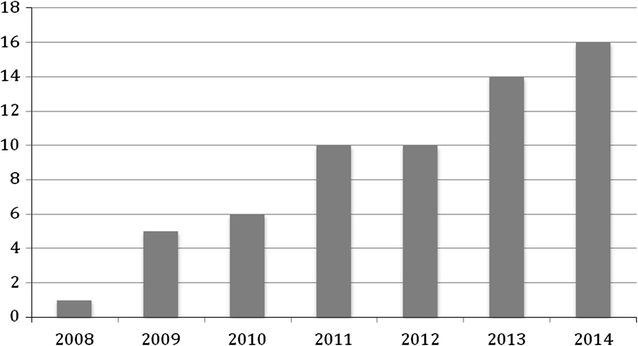Babesiosis in Long Island: review of 62 cases focusing on treatment with azithromycin and atovaquone
- PMID: 28399851
- PMCID: PMC5387270
- DOI: 10.1186/s12941-017-0198-9
Babesiosis in Long Island: review of 62 cases focusing on treatment with azithromycin and atovaquone
Abstract
Background: Babesiosis is a potentially life-threatening, tick-borne infection endemic in New York. The purpose of this study was to review recent trends in babesiosis management and outcomes focusing on patients, who were treated with combination of azithromycin and atovaquone.
Methods: A retrospective chart review of patients seen at Stony Brook University Hospital between 2008 and 2014 with peripheral blood smears positive for Babesia was performed. Clinical and epidemiological information was recorded and analyzed.
Results: 62 patients had confirmed babesiosis (presence of parasitemia). Forty six patients (74%) were treated exclusively with combination of azithromycin and atovaquone; 40 (87%) of these patients were hospitalized, 11 (28%) were admitted to Intensive Care Unit (ICU), 1 (2%) died. Majority of patients presented febrile with median temperature 38.5 °C. Median peak parasitemia among all patients was 1.3%, and median parasitemia among patients admitted to ICU was 5.0%. Six patients (15%) required exchange transfusion. Majority of patients (98%) improved and were discharged from hospital or clinic.
Conclusion: Symptomatic babesiosis is still rare even in endemic regions. Recommended treatment regimen is well tolerated and effective. Compared to historical controls we observed a lower overall mortality.
Keywords: Atovaquone; Azithromycin; Babesia; Babesiosis; Tick-borne.
Figures
References
-
- Krause PJ, McKay K, Gadbaw J, Christianson D, Closter L, Lepore T, et al. Increasing health burden of human babesiosis in endemic sites. Am J Trop Med Hyg. 2003;68:431–436. - PubMed
MeSH terms
Substances
LinkOut - more resources
Full Text Sources
Other Literature Sources


